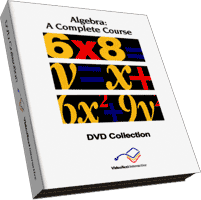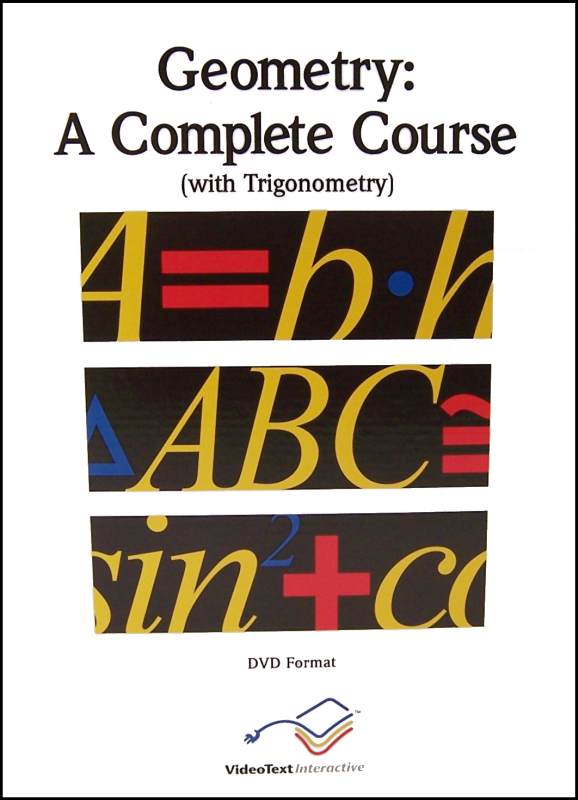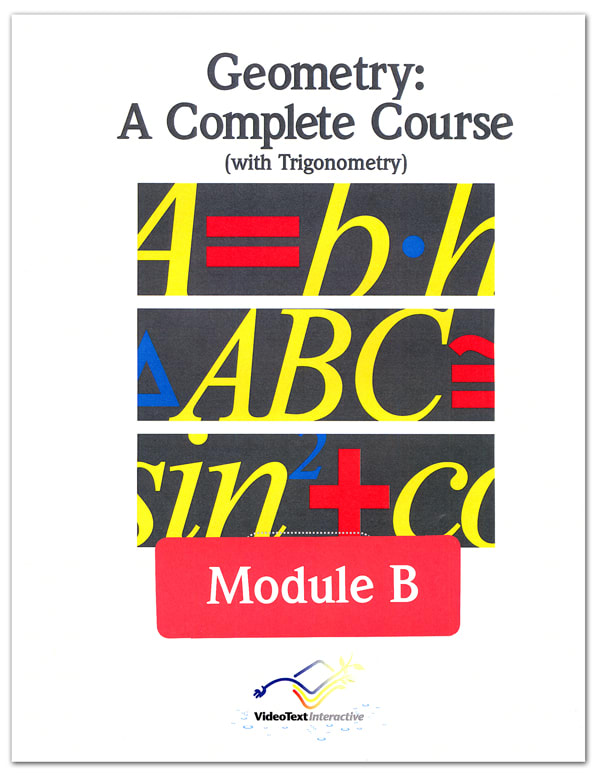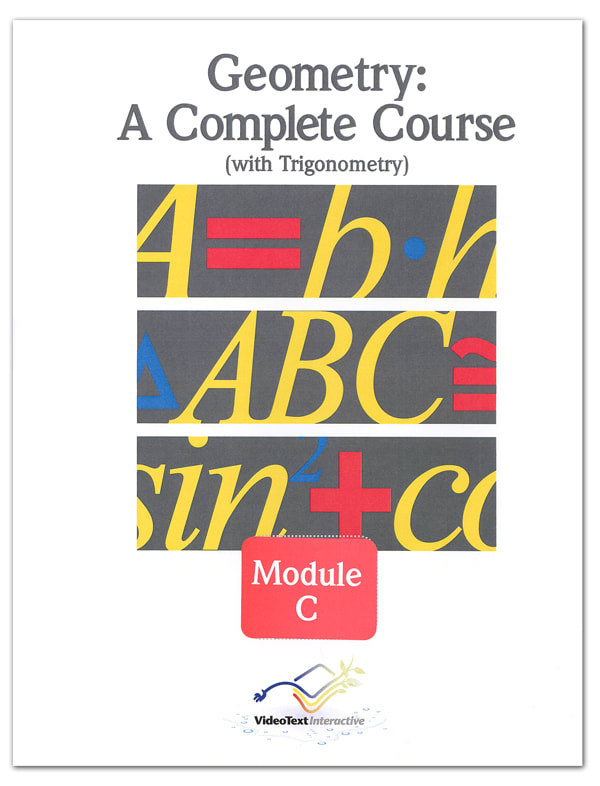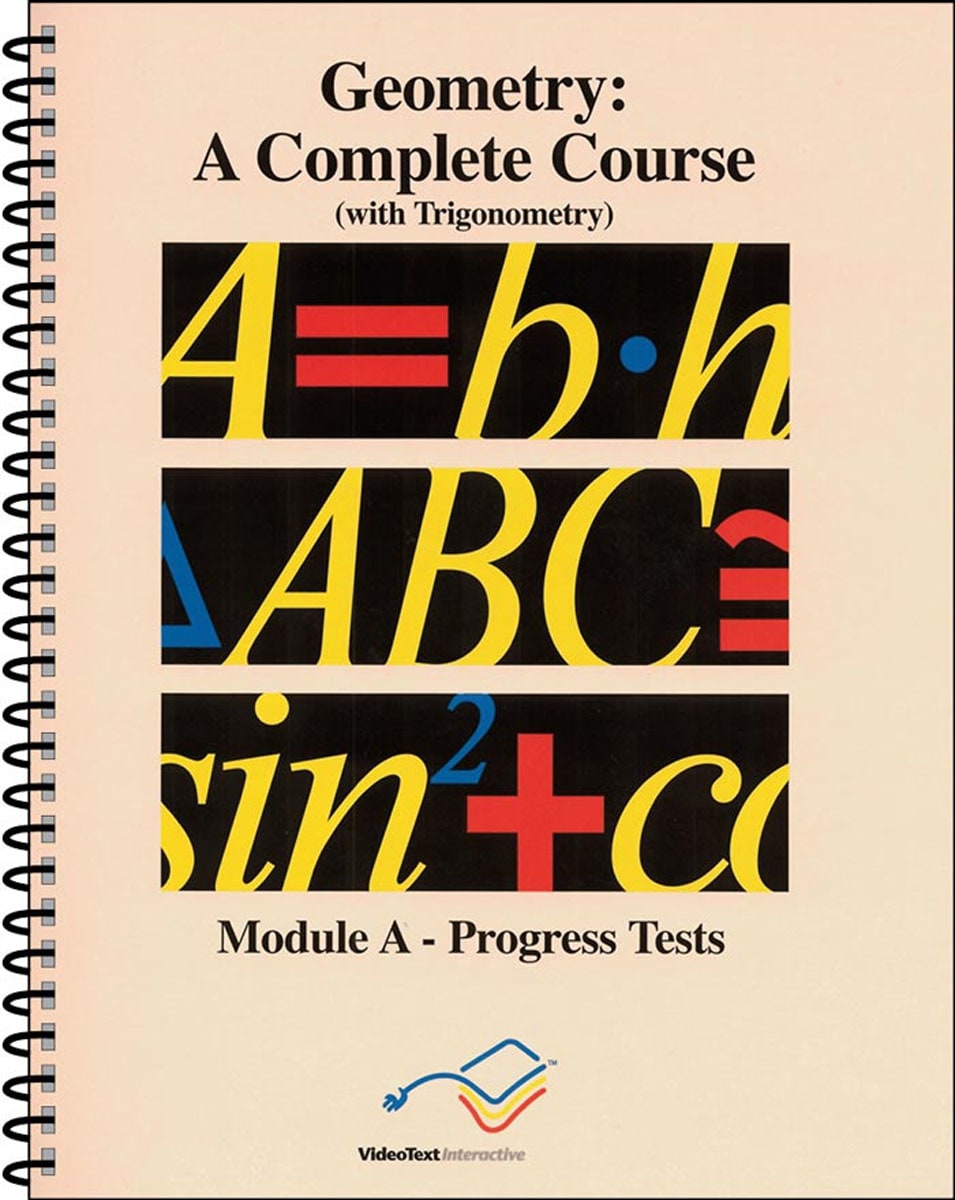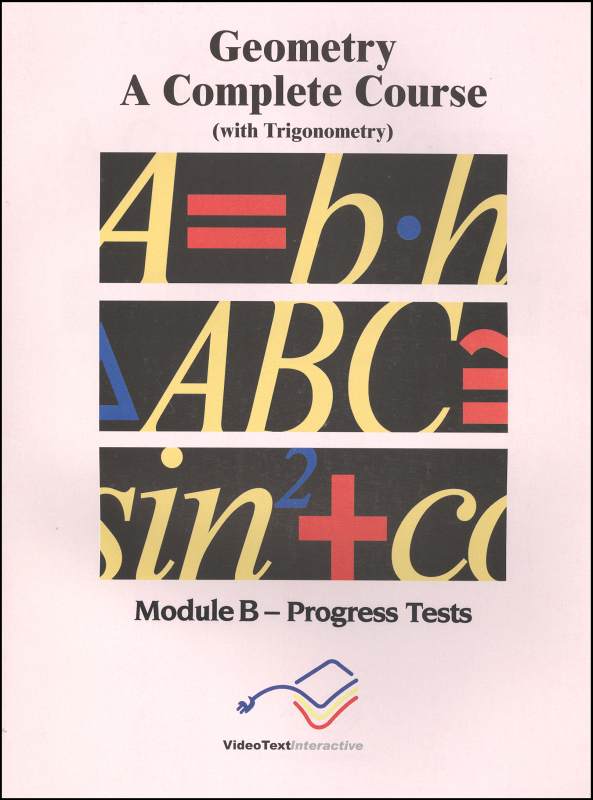The creators of VideoText's Algebra have also produced Geometry: A Complete Course. Both products work together to provide solid coverage of algebra 1, algebra 2, and geometry, with some coverage of trigonometry in a non-traditional fashion. The course components are presented through online videos and PDFS, although DVDs and printed books are also available. Note that the sixth unit on trigonometry is only available online.
The approach is a bit different from most other courses, even though the concepts taught are the same as in most other courses. The goal is to develop conceptual understanding, and this is accomplished by working through concepts in a "building blocks" fashion. Students first learn fundamental terms and definitions along with inductive and deductive reasoning and logic. Then they learn fundamental postulates and theorems, dealing with points, lines, segments, rays, and angles. Formal proofs are introduced at this point. Next, students study triangles, other polygons, and circles.
Only after this do they learn how to do constructions with a compass and straight edge. In the final unit, they study trigonometry.
VideoText's Geometry is designed much like their algebra course but with five modules containing six units. Each of the five modules (labeled A through E) has videos, course notes, a worktext, a solutions manual, and the Instructor's Guide with Detailed Solutions for Progress Tests.
Instruction is presented online or on DVDs by instructor Tom Clark who thoroughly explains each concept using examples and animations. Students should stop the video frequently to answer questions posed or discuss concepts with a parent/teacher. Students should not be writing or taking notes while watching. After they finish watching the video lesson, students can go over the lesson in the Course Notes booklet or PDF to make sure they grasped the concepts. Then they can begin to work the exercises in the Student Worktext. Worktext exercises again review key terms and present examples with complete solutions before students begin the actual exercises. The complete Solutions Manual can be used for checking student work and identifying problem areas. A separate book of quizzes and tests has two versions of each in case students need to retest.
The complete program might take one to two years to complete depending upon the ability of the student, and also whether or not a student chooses to complete study through trigonometry. (If not, they can skip the last unit.) Students should take at least two days per lesson so that they are NOT testing on the same day they are learning the material. This ensures they are not just parroting back what they heard but have grasped the concepts.




